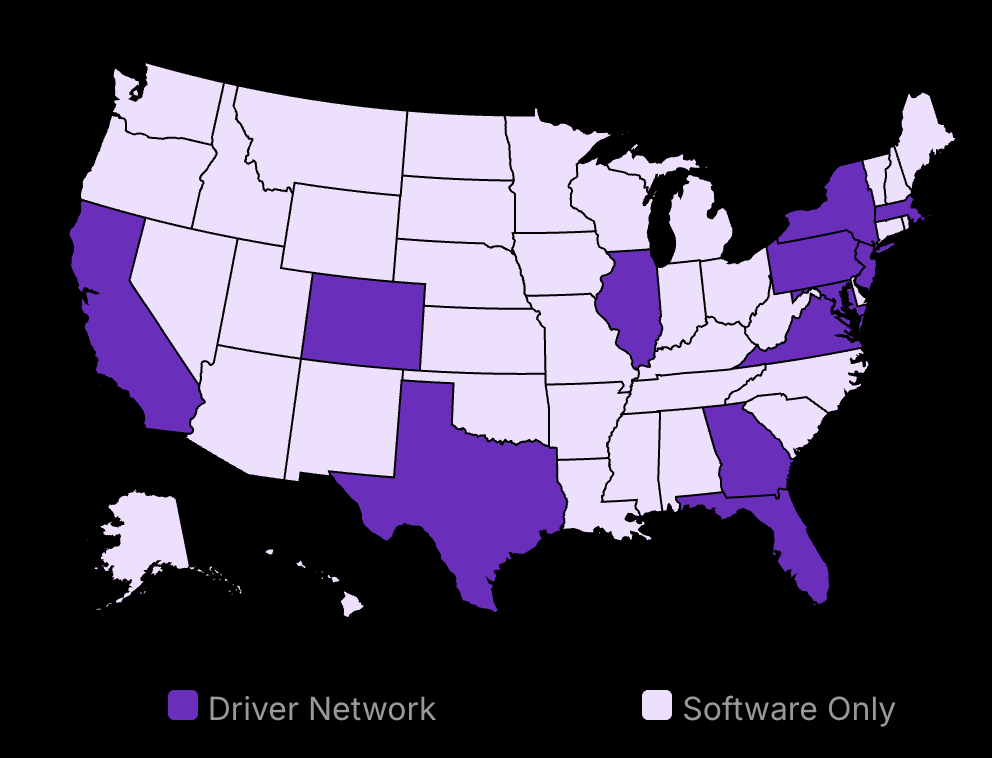Starting your own business today means facing a new truth about money. While great ideas are common, finding the financial resources—or learning how to finance a business—to make them real is not. In 2025, business funding looks different than it did five years ago. The old ways of finance still work, but new doors have opened too, especially for startups figuring out how to finance a business without traditional hurdles.
Let me ask you something: What’s holding your small business back right now? Is it not knowing how to finance a business in today’s fast-changing landscape?
Funding Barriers: 83% of small business owners do not access bank loans or venture capital at the time of startup.
But here’s the part most people miss: it’s rarely about the total amount available. It’s about finding the right type of funding that fits your specific business needs. Maybe that involves self-funding initially or perhaps seeking external capital.
I learned this lesson the hard way during a lengthy application process. The fifteenth conversation changed everything – not because my loan request was finally approved, but because someone finally told me I was looking in the wrong place.
“‘Your business model isn’t built for the kind of business loan offered by most banks,’ the loan officer said. ‘You need growth capital, not a significant debt obligation.’”
That single shift in perspective led me to explore different financing options I hadn’t considered, from SBA loans backed by the Small Business Administration (SBA) to pitching angel investors.
The funding landscape of 2025 rewards those who understand all their financing options. The best choice depends on your growth stage, industry, and goals. Some paths involve investors and give you money but reduce your ownership share. Others preserve your ownership but might limit your growth speed or require using personal assets, like tapping into retirement accounts. Understanding concepts like cash flow and making accurate financial projections are crucial.
In this guide, I’ll walk you through the five best ways to finance your new business or support an existing business in 2025, covering everything from managing startup costs and operating expenses to securing working capital, with honest pros and cons for each method.

Save 80% of delivery management time
We handle everything:
- Dedicated operations manager
- Real-time tracking dashboard
- Automated customer notifications
- Urgent issue resolution
Innovative Business Strategies for 2025: How To Finance A Business
Equity crowdfunding and revenue-based financing are rising fast.
Each offers unique benefits for modern businesses.
They provide alternatives beyond traditional loans.
1. Equity Crowdfunding
Equity crowdfunding allows companies to raise money from a large group of people. This method offers companies the opportunity to turn supporters into investors by trading shares for investment. Platforms like SeedInvest and Crowdcube lead this space. In places like California, equity crowdfunding is thriving.
Regional Crowdfunding Success: California leads the United States in equity crowdfunding, with more than $483 million raised across 1,666 campaigns, achieving a 66% success rate.
Beyond just fundraising, equity crowdfunding platforms have become all-rounders. As Ryan Feit, CEO of SeedInvest, pointed out, platforms now offer support with compliance and marketing. They are not only financial platforms but strategic partners. This approach can significantly aid startups lacking in managerial experience.
Crowdfunding Market Expansion: The global crowdfunding market size is projected to reach $5.53 billion by 2030, expanding at a compound annual growth rate (CAGR) of 17.6% from 2025 to 2030.
There’s a lot to consider here: Kevin O’Leary from Shark Tank sees equity crowdfunding as a game-changer for startups. By democratizing access, it connects businesses with investors worldwide. But, there are challenges too. Giving equity means sharing control. Founders may need to balance between creativity and investor expectations. Books like “Crowd Start” by Ariel Hyatt can provide further insight into this funding model.
2. Revenue-Based Financing
Revenue-based financing provides an alternative where payments reflect business performance, not fixed terms. Companies receive funding in return for a set percentage of future revenues. This option suits businesses with consistent cash flow and avoids losing equity or high interest rates.
Lighter Capital describes this as a “flexible funding option,” highlighting the alignment between funders and founders. The market for revenue-based financing is booming. This growth reflects its demand, especially among small enterprises needing adaptable financial solutions.
Revenue Financing Growth: The revenue-based financing market is expected to grow from $5.77 billion in 2024 to $9.81 billion in 2025, at a CAGR of 70.1%.
Despite the perks, companies must be ready to share financial data openly. Transparency is vital for both parties to succeed. The flexibility of repayments sounds appealing, but unpredictable cash flow might cause problems. Books like “The Revenue Based Financing Playbook” can provide more guidance for those interested in exploring this funding model.
Understanding when and how to choose these models might require looking into the particular needs of the business. The choice isn’t about picking the ‘best’ funding but the right fit. Preferences might vary based on business goals, the current financial environment, and where stakeholders envision growth. These models offer paths that diverge from traditional lending. In a world where financial landscapes evolve, having such diverse options enables more businesses to access suitable resources.
Startup Financing Options for Your Own Business 2025: What’s Hot This Year?
Convertible notes and angel investors remain essential for early funding.
Government grants lead in non-traditional funding support.
Exploring diverse options suits specific business needs.
3. Convertible Notes
Convertible notes have taken center stage as a flexible tool for early-stage fundraising in 2025. Essentially, they start as a loan, which can later turn into equity if certain conditions are met. This often happens when a company moves on to its Series A funding round. Businesses favor convertible notes because they delay the need for a clear valuation. Investors, meanwhile, appreciate convertible notes because they have a chance to receive equity at a lower price during the next financing round. Experts, such as Jeffrey Briggs, note that while convertible notes are popular, many founders may not fully grasp their complexities.
This funding tool allows startups to focus on their growth and product development by avoiding early-stage valuation challenges. Convertible notes introduce advantages like deferred valuations and the opportunity to attract more investors once a business gains traction. This creates a “best-case scenario” where startups with a higher-than-expected valuation during Series A can reward early investors with substantial gains.
However, founders and investors need to comprehend the potential pitfalls. For instance, complications may arise if the next funding round doesn’t occur as planned or if terms aren’t explicitly defined. Those interested in delving further into this subject can explore resources like “Venture Deals” by Brad Feld and Jason Mendelson, which provides insights into startup financing.
4. Angel Investors: Funding Beyond Friends and Family
Angel investors remain a steadfast player in the startup ecosystem. These individuals, often former entrepreneurs themselves, offer not only capital but also mentorship and guidance. Unlike venture capital firms, angel investors exhibit more flexibility, choosing deals based on potential and shared vision. In fact, they often operate within the startup industry, providing valuable insights and connections.
Angel investments tend to come with fewer strings attached when compared to institutional financing. This way, startups enjoy greater decision-making freedom. Plus, angel investors frequently invest at the earliest stages, which is critical for startups seeking to boost early levels of funding.
Yet, startups must approach angel investors with a solid pitch explaining their competitive edge and growth potential. Convincing an angel investor requires transparency about the business plan and financial projections. A promising way to gain deeper understanding is through “Angels, Dragons, and Vultures” by Simon Acland, which delves into the art and science of working with angel investors.
5. Government Grants and Programs
Government grants provide an attractive avenue for startups, offering financial support without the burden of repayment. These grants often target specific industries, such as tech and renewable energy. Given the ongoing push for innovation, government initiatives increasingly favor startups that promise technological advancements or environmental benefits.
Securing a government grant demands rigorous research and application. Each grant program has unique criteria and objectives that startups must match. The application process can be tedious and competitive, but the benefits outweigh the challenges for many businesses. As highlighted by Swoop US, government grants represent a significant funding source without the pressures of repayment.
However, relying solely on grants isn’t advisable. Grant amounts are typically limited, and their competitive nature makes them unpredictable. Entrepreneurs should learn more about government grants by exploring resources from local business development centers or websites such as grants.gov for the most up-to-date programs and opportunities. Startups with goals aligning with societal benefits stand a better chance at winning these coveted funds.
Pros and Cons of Business Loans for a Business in 2025
TL;DR:
Business loans provide money without losing ownership.
They have predictable repayments but can affect cash flow.
Eligibility criteria and potentially high costs are drawbacks.
Advantages of Business Loans
Business loans are a popular choice. They offer money without losing control. Here are some reasons why businesses choose loans:
Access to Large Sums of Money: Banks are typically willing to lend significant amounts to businesses. This is especially useful for big projects or expansions. For instance, during Amazon’s early years, securing substantial loans allowed for rapid warehouse expansions.
Retain Full Ownership: When you borrow money, you don’t have to give up any part of your business. Unlike equity financing, loans mean no ownership dilution. You are the key decision-maker, steering your business’s future.
Fixed Interest Rates Provide Repayment Predictability: Many loans have fixed rates, providing stability. This predictability helps with financial planning. Companies like Unilever often prefer loans for projects because they can plan budgets with confidence.
A strong understanding of these benefits lets businesses leverage loans for growth.
Disadvantages of Business Loans: Strict Eligibility Requirements
While beneficial, loans also have drawbacks. Understanding these can save you money and hassle.
Strict Eligibility Criteria from Lenders: Banks have tight requirements. Businesses need a strong credit score and detailed financial history.
Interest and Fees Can Accumulate, Increasing Costs: Over time, interest can add up. Loan fees can be substantial too, affecting profitability.
Regular Repayments Affect Cash Flow: Monthly payments can strain budgets. This can limit reinvestment opportunities. Research by Harvard Business Review shows that regular repayments mean businesses need strong cash flow management to avoid liquidity issues.
Awareness of these aspects helps businesses make informed decisions.
Evaluating If Business Loans Are Right for You vs. Using Personal Funds
Is it smart to take a small business loan? This depends on your goals and financial health. Loans can be useful for growth or urgent needs, but only if you can afford repayments. Always weigh the pros and cons with professionals.
Is it better to get a personal loan or a business loan? Business loans have benefits over personal ones. They’re tailored to business needs and can be tax-deductible. However, personal loans might offer lower interest rates for individuals with great credit.
Do business loans hurt your credit? Timely repayments can strengthen your credit. However, missed payments harm it. Credit bureaus monitor business loans, so consistent payments maintain a positive score.
Exploring Alternative Funding Sources for Entrepreneurs
Peer-to-peer lending gives fast access to funds and competitive rates.
Venture capital provides strategic help but may limit control.
Peer-to-Peer Lending
Peer-to-peer (P2P) lending connects borrowers directly with individual investors. This cuts out banks and allows both parties to negotiate terms. One major advantage is quicker access to funds. Traditional banks have detailed processes and can take weeks to approve loans. P2P platforms can streamline this, making funds available sooner. This market is growing fast.
Interest rates on P2P platforms tend to be more attractive. This makes them a great choice for entrepreneurs looking to save on costs. They often balance between what banks offer and more expensive private lending. It’s important to evaluate options carefully. Each platform has its own risk factors and fee structures. Check the reputation of the platform before committing. Books such as “The Crowdfunding Bible” by Scott Steinberg offer deeper insights into navigating these platforms effectively. They provide context on maximizing funding opportunities while managing risk.
P2P lending simplifies access but demands a clear strategy. Borrowers need a solid financial plan. Entrepreneurs should also know how their businesses scales over time. For those new to P2P lending, understanding this dynamic is key. Programs like Coursera’s “FinTech: Foundations & Applications of Financial Technology” can provide valuable context on how this industry fits into modern financial strategies.
Venture Capital Funding
Venture capital (VC) is different from loans. Startups exchange a share of ownership to get funds from VC firms. These firms are not just about money. They provide startups with strategic guidance, helping shape growth trajectories and decision-making processes.
Venture Capital Investment Volume: In 2024, U.S. venture capital firms closed 14,320 deals worth $215.4 billion, a 30% year-over-year increase from 2023’s $165.1 billion.
A downside is the loss of some control. Venture capitalists may require board seats or decision-making power. This can affect how the founders steer their company. Balancing input from new board members with your vision can be challenging. “Startup Boards: Getting the Most Out of Your Board of Directors” by Brad Feld and Mahendra Ramsinghani is a great read for those in this position. It provides insights on how to align the interests of venture investors with the company’s long-term goals.
Geographic VC Fund Variation: The median venture capital fund size outside California, New York, and Massachusetts was $10 million, significantly lower than the overall U.S. median of $21.3 million.
Remember, not all startups need venture capital. If growth potential is less aggressive, other funding routes might suit better. Resources like the NVCA Yearbook provides a comprehensive look at recent trends and available data. For deeper industry analysis, attending sessions organized by the National Venture Capital Association can offer timely insights.
Predictions for Business Financing: What to Expect in 2025 and Beyond
Cryptocurrency will reshape business transactions.
Eco-focused funding gains importance.
Community banks strengthen local economies.
Rise of Cryptocurrency Funding
Over the past year, cryptocurrency funding has made significant strides in business. Starting last April, many small and medium enterprises began accepting digital currencies as payment, increasing financial inclusivity. Throughout the summer, major tech firms invested in blockchain technology to enhance transactional transparency. By September, regulatory bodies worldwide began actively discussing cryptocurrencies, leading to increased market stability by the end of 2024.
Business Crypto Adoption Rate: The adoption of cryptocurrency as a payment method grew by 55% in 2023, with businesses increasingly accepting Bitcoin and stablecoins.
Looking ahead, the use of digital currencies is expected to broaden even more. As regulatory landscapes solidify and become clearer, businesses should consider integrating cryptocurrency payments into their systems. This trend indicates a future where blockchain-powered transactions could dominate, offering enhanced security and efficiency. Businesses should keep an eye on market volatility and adjust regulations to stay ahead.
Generational Crypto Preference: Surveys show that 60% of millennials and Gen Z view cryptocurrency as a preferred investment over traditional stocks.
Increased Focus on Sustainability Funding
The demand for sustainability funding has skyrocketed in the past year. In early 2024, a surge in climate-focused projects captured investors’ attention. By mid-year, environmentally friendly ventures received significant funding, driven by stricter global regulations favoring sustainability. Many financial institutions set up dedicated green funds and increased their focus on sustainable investing. The culmination of these factors led to more businesses aligning their models with eco-friendly practices by the end of 2024.
In 2025, this focus is projected to intensify. Lenders are more likely to fund businesses with clear sustainability metrics. Companies positioning themselves as eco-conscious will have easier access to funds. Enterprises should actively seek green certification and demonstrate compliance with environmental regulations to attract such funding. This proactive approach will not only meet investor expectations but also contribute positively to global environmental efforts.
Growth of Community-Based Lending and Your Balance Sheet
Community-based lending is redrawing the funding map. Over the past year, small businesses have increasingly turned to local banks and community groups for financing. The initial months saw an uptick in localized funding initiatives, driven by community solidarity and localized economic goals. By mid-2024, community banks began offering competitive terms to support local entrepreneurs. These initiatives reinforced regional economies and fostered close ties within communities.
As we move into 2025, community lending will likely keep expanding. This growth promises favorable terms to businesses with strong community links. Entrepreneurs should engage with local banks and chambers of commerce to explore these opportunities. Building a solid local network can yield not just funding but support in terms of resources and guidance. Strengthening community connections will be crucial to gaining a hedge over bigger competitors unable to tap into such localized networks.
Frequently Asked Questions (FAQs)
Beyond startups, what financing routes are suitable for an existing business looking to fund growth or manage expenses?
An existing business can explore traditional business loans (including SBA loans), revenue-based financing if cash flow is consistent, peer-to-peer lending, or potentially seek capital from angel investors or venture capital, depending on its stage and goals.
How important is a detailed business plan when approaching potential funders like angel investors or banks?
A solid business plan, including clear financial projections and outlining competitive advantages, is crucial. It’s necessary for convincing angel investors and often required by lenders (banks, SBA) who assess financial history and repayment ability.
How can entrepreneurs ensure they secure enough money for their needs, and what are the alternatives if one source isn’t sufficient?
Determining the right amount involves careful planning and financial projections. If one source like a grant is limited or a loan doesn’t cover everything, alternatives include combining different funding types (e.g., loans + angel investment), exploring peer-to-peer lending, or seeking growth capital instead of just debt, matching the funding type to specific needs.
What are the key trade-offs between taking a traditional business loan and using equity crowdfunding?
Business loans allow founders to retain full ownership and offer predictable repayments, but require meeting strict eligibility criteria and can strain cash flow. Equity crowdfunding provides capital without debt but requires giving up ownership shares and potentially some control to investors.
What emerging trends in business financing should entrepreneurs watch for in 2025 and beyond?
Entrepreneurs should monitor the rise of cryptocurrency funding options, an increased focus on sustainability-linked financing (green funds), and the continued growth of community-based lending through local banks and groups.
Conclusion
Funding your company in 2025 offers more financing options than ever before. From equity crowdfunding connecting you with multiple investors to revenue-based financing preserving your ownership share, today’s entrepreneurs have flexible paths. Traditional business loan routes, including SBA loans facilitated by the Small Business Administration (SBA) or options from credit unions, remain viable. However, they require careful due diligence regarding their impact on cash flow and the creation of a debt obligation you must pay. These often involve reviewing financial statements like your balance sheet during the approval process. Alternative sources provide fresh approaches tailored to different business needs, sometimes offering lower down payments than most banks, and can be crucial for managing business expenses and securing working capital.
The financing landscape continues to shift, with sources like angel investors, cryptocurrency, and sustainability-focused funding gaining ground. Evaluating these often requires solid financial projections. These trends reflect how business capital is becoming more specialized and aligned with broader economic and social values.
Remember that the best financing method depends on your specific situation – covering initial startup costs for a new business or funding equipment financing for an existing business – plus your growth plans, and comfort with sharing control. Consider discussing options with a financial advisor. Maybe self-funding or seeking help from friends and family makes sense initially, avoiding immediate monthly payments associated with debt. Take time to assess each option’s benefits and limitations before making commitments. The most successful small business owners often take an active role in combining funding approaches at different growth stages.
As you move forward with your business plans, perhaps preparing a formal loan request or strengthening your financial statements, revisit this guide to align your financing strategy with your long-term vision. The right funding choice today creates the foundation for your small business success tomorrow.



























